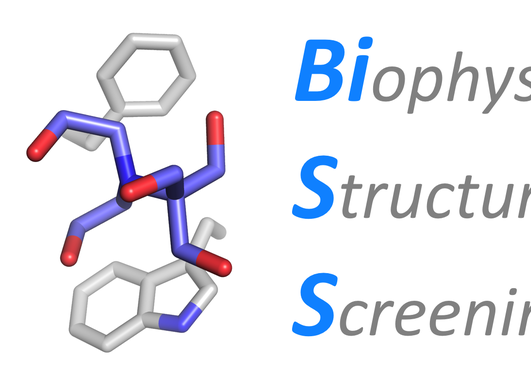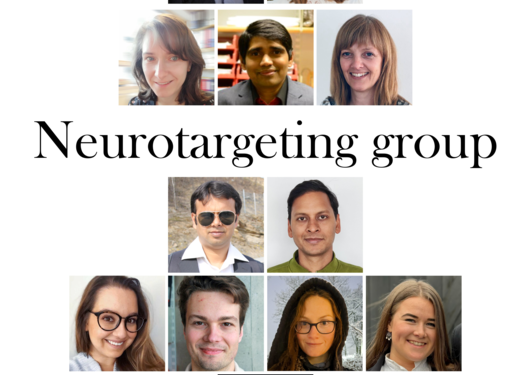- E-mailAnne.Baumann@uib.no
- Phone+47 55 58 64 36
- Visitor AddressJonas Lies vei 915009 BergenRoom5B143B
- Postal AddressPostboks 78045020 Bergen
- (2022). Metabolically-incorporated deuterium in myelin localized by neutron diffraction and identified by mass spectrometry. Current Research in Structural Biology. 231-245.
- (2020). GADL1 is a multifunctional decarboxylase with tissue-specific roles in β-alanine and carnosine production. Science Advances. 1-19.
- (2019). Molecular structure and function of myelin protein P0 in membrane stacking. Scientific Reports. 1-15.
- (2017). Molecular mechanisms of Charcot-Marie-Tooth neuropathy linked to mutations in human myelin protein P2. Scientific Reports. 1-13.
- (2017). Membrane Association Landscape of Myelin Basic Protein Portrays Formation of the Myelin Major Dense Line. Scientific Reports. 1-18.
- (2017). Collapsin response mediator protein 2: high-resolution crystal structure sheds light on small-molecule binding, post-translational modifications, and conformational flexibility. Amino Acids. 747-759.
- (2016). Tyrosine Hydroxylase Binding to Phospholipid Membranes Prompts Its Amyloid Aggregation and Compromises Bilayer Integrity. Scientific Reports.
- (2016). Stable preparations of tyrosine hydroxylase provide the solution structure of the full-length enzyme. Scientific Reports. 14 pages.
- (2015). Arc is a flexible modular protein capable of reversible self-oligomerization. Biochemical Journal. 145-158.
- (2014). The N-terminal sequence of tyrosine hydroxylase is a conformationally versatile motif that binds 14-3-3 proteins and membranes. Journal of Molecular Biology (JMB). 150-168.
- (2014). Identification of a novel lytic peptide for the treatment of solid tumours. Genes & cancer. 186-200.
- (2013). Vitellogenin recognizes cell damage through membrane binding and shields living cells from reactive oxygen species. Journal of Biological Chemistry. 28369-28381.
- (2012). The peripheral binding of 14-3-3gamma to membranes involves isoform-specific histidine residues. PLOS ONE.
- (2012). HAMLET forms annular oligomers when deposited with phoshpolipid monolayers. Journal of Molecular Biology (JMB). 90-102.
- (2010). HAMLET interacts with lipid membranes and perturbs their structure and integrity. PLOS ONE. 10 pages.
- (2017). SUMO on CRMPs - wrestling for pain? Channels. 1-3.
- (2023). Expression, Purification, and Small Molecule Binding to Cysteine Sulfinic Acid Decarboxylase.
- (2019). The Characterization of Disordered Membrane-Binding Proteins of Myelin. A Biophysical Approach.
- (2013). The Peripheral Binding of Proteins to Phospholipid Membranes, with Focus on α-Lactalbumin and Tyrosine Hydroxylase.
- (2011). Treatment of Solid Cancers Using a New Cationic Cytolytic Peptide. European Journal of Cancer. S148-S148.
- (2018). Erratum: Publisher Correction: Molecular mechanisms of Charcot-Marie-Tooth neuropathy linked to mutations in human myelin protein P2. Scientific Reports.
More information in national current research information system (CRIStin)
2020
Mahootchi E., Homaei S.C., Kleppe R., Winge I., Hegvik T-A., Perez R.M., Totland C., Mogavero F., Baumann A., Glennon J.C., Miletic H., Kursula P., Haavik J.
GADL1 is a multifunctional decarboxylase with tissue-specific roles in β-alanine and carnosine production. Science Advances (2020), 6:eabb3713.(29) s. 1-19
2019
Raasakka A., Ruskamo S., Kowal J., Han H., Baumann A., Myllykoski M., Fasano A., Rossano R., Riccio P., Bürck J., Ulrich A.S., Stahlberg H., Kursula P.
Molecular structure and function of myelin protein P0 in membrane stacking. Scientific Reports (2019), 9:642. s. 1-15
2017
Baumann A., Kursula P.
SUMO on CRMPs - wrestling for pain? Channels (2017), 24. s. 1-3
Myllykoski M., Baumann A., Hensley K., Kursula P.
Collapsin response mediator protein 2: high-resolution crystal structure sheds light on small-molecule binding, post-translational modifications, and conformational flexibility. Amino Acids (2017), 49.(4) s. 747-759
Raasakka A., Ruskamo S., Kowal J., Barker R., Baumann A., Martel A., Tuusa J., Myllykoski M., Bürck J., Ulrich A.S., Stahlberg H., Kursula P.
Membrane Association Landscape of Myelin Basic Protein Portrays Formation of the Myelin Major Dense Line. Scientific Reports (2017), 7:4974. s. 1-18
Ruskamo S., Nieminen T., Kristiansen C. K., Vatne G. H., Baumann A., Hallin E.I., Raasakka A., Joensuu P., Bergmann U., Vattulainen I., Kursula P.
Molecular mechanisms of Charcot-Marie-Tooth neuropathy linked to mutations in human myelin protein P2. Scientific Reports (2017), 7:6510. s. 1-13
2016
Baumann A., Jorge Finnigan A., Kunwar J.- K. C., Sauter A., Horvath I., Morozova-Roche L. A., Martinez A.
Tyrosine Hydroxylase Binding to Phospholipid Membranes Prompts Its Amyloid Aggregation and Compromises Bilayer Integrity. Scientific Reports (2016), 6:39488
2015
Myrum C., Baumann A., Bustad H.J., Flydal M.I., Mariaule V., Alvira S., Cuéllar J., Haavik J., Soulé J., Valpuesta J.M., Márquez J.A., Martinez A. and Bramham C.R.
Arc is a flexible modular protein capable of reversible self-oligomerization. Biochem J. (2015), 468(1):145-58
2014
Szczepanski C., Tenstad O., Baumann A., Martinez A., Myklebust R., Bjerkvig R., and Prestegarden L.
Identification of a novel lytic peptide for the treatment of solid tumours. Genes & Cancer (2014), 5(5-6):186-200
Skjevik, Å. A., Mileni, M., Baumann, A., Halskau, Ø., Teigen, K., Stevens, R. C., and Martinez, A.
The N-terminal sequence of tyrosine hydroxylase is a conformationally versatile motif that binds 14-3-3 proteins and membranes. Journal of molecular biology (2014), 426, 150-168
2013
Havukainen, H., Münch, D., Baumann, A., Zhong, S., Halskau, Ø., Krogsgaard, M., and Amdam, G. V.
Vitellogenin recognizes cell damage through membrane binding and shields living cells from reactive oxygen species. J. Biol. Chem. (2013), 288, 28369-28381
2012
Bustad, H. J., Skjærven, L., Ying, M., Halskau jr, Ø., Baumann, A., Rodriguez-Larrea, D., Costas, M., Underhaug, J., Sanchez-Ruiz, J. M. and Martinez, A.
The Peripheral Binding of 14-3-3gamma to Membranes Involves Isoform-Specific Histidine Residues. PLoS ONE (2012), 7(11): e49671.
Baumann, A., Gjerde, A. U., Ying, M., Svanborg, C., Holmsen, H., Glomm, W., Martinez, A. and Halskau jr, Ø.
HAMLET forms annular oligomers when deposited with phoshpolipid monolayers. Journal of Molecular Biology (2012), 18(1-2) p. 90-102.
2011
Szczepanski, C., Bjerkvig, R., Tenstad, O., Thorsen, F. A., Wendelbo, I. H., Martinez, A., Baumann, A. and Prestegarden, L.
Treatment of Solid Cancers Using a New Cationic Cytolytic Peptide. European Journal of Cancer (2011), 47, 148.
2010
Mossberg, A-K., Puchades, M., Halskau, Ø., Baumann, A., Lanekoff, I., Chao, Y., Martinez, A., Svanborg, C. and Karlsson, R.
HAMLET interacts with lipid membranes and perturbs their structure and integrity. PLoS ONE (2010), 5(2): e9384.
2009
Halskau, Ø., Ying, M., Baumann, A., Kleppe, R., Rodriguez-Larrea, D., Almås, B., Haavik, J. and Martinez, A.
Three-way interaction between 14-3-3 proteins, the N-terminal region of tyrosine hydroxylase and negatively charged membranes. J. Biol. Chem. (2009), 284, 32758–32769.
Molecular interactions of therapeutic potential in neurodevelopmental disorders
Despite numerous high-throughput sequencing efforts in the past years, little data at the molecular level exist on proteins associated with neurodevelopmental disorders; even less is known about the protein-protein interactions (PPIs) involved in such conditions. While a number of proteins have been reported as candidates for involvement in autism spectrum disorders (ASD) and attention deficit/hyperactivity disorder (ADHD), their respective interaction networks are poorly characterized. In this project, a number of seed proteins with suggested relevance to these two disorders will be selected and their interaction networks, and overlaps therein, will be characterized and validated. Selected “hot spot” protein interactions will be studied further using purified components, focusing on the effects of genetic variants on protein structure and function. Validated protein complexes will be further characterized using structural biology techniques, paving the way for future experiments aiming at pharmacological intervention of protein interactions.
Within the current project, we plan to identify central PPIs that could be of importance in neurodevelopmental disorders. Further, we want to validate the corresponding protein complexes in vitro and study the effects of known mutations/variants on PPIs. We aim to get high-resolution structural information on selected protein complexes and begin studies on small compounds targeting these selected PPIs. During the project, the aim is to start from selected seed proteins (including collapsin response mediator protein 2; CRMP-2), with partially characterized PPIs, at the same time attempting to identify novel interactions of relevance


